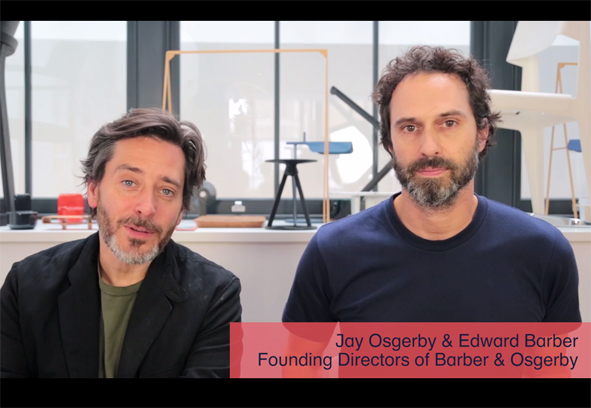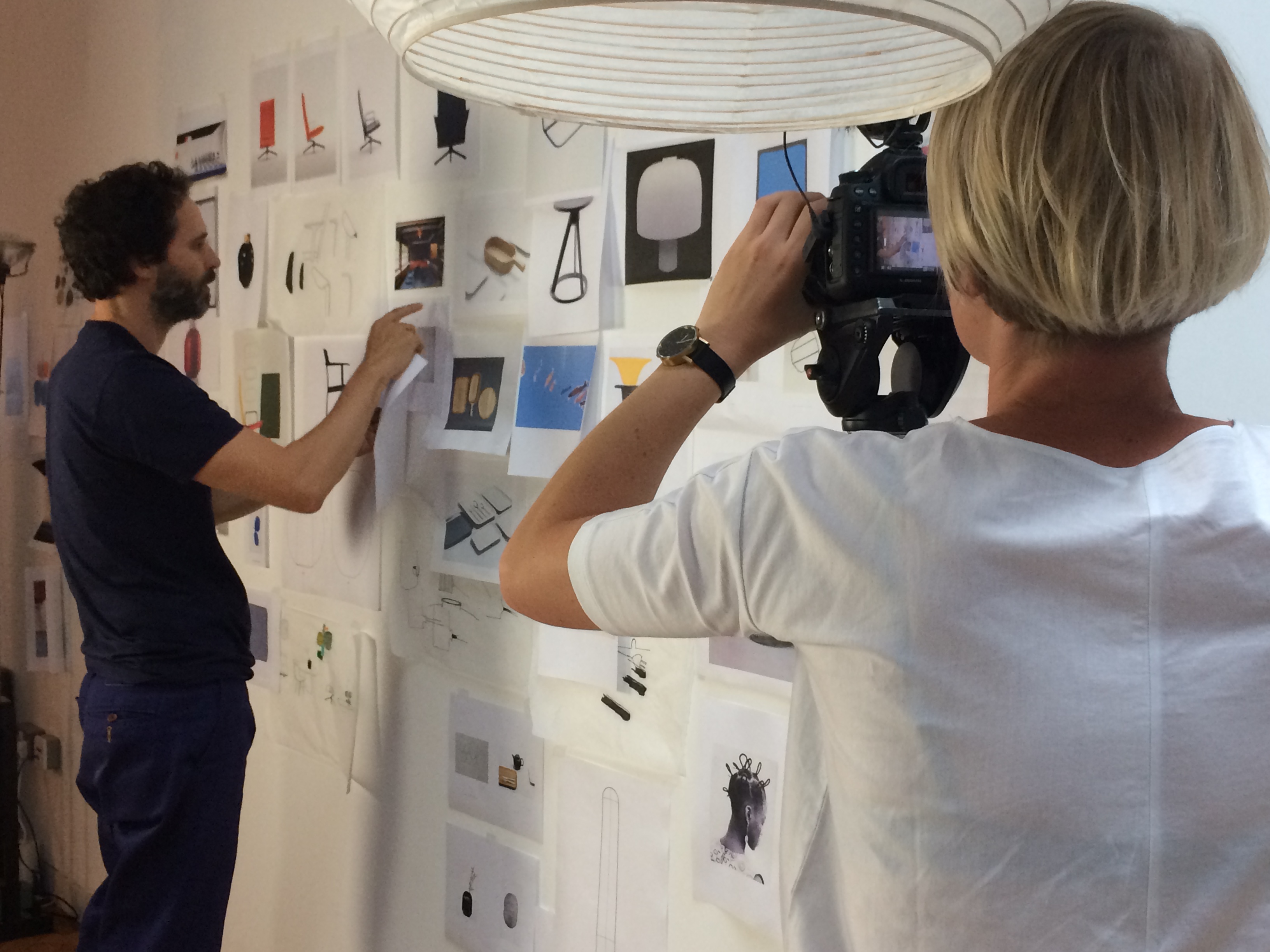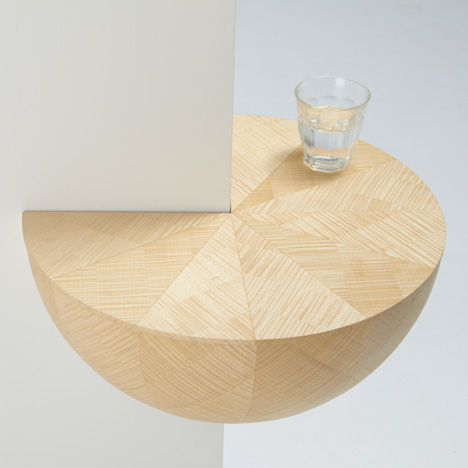Resources Index
-
Design Ventura 2023-24 Webinars
Our webinars feature designers at various stages in their careers, speaking about their work and offering top tips for each stage of the Design Ventura project. They are suitable for teachers and students. Here are our 4 webinars from this year:
Webinar 1 with Sophie Puffett.
Webinar 2 with Rob Earl-Ocran.
Webinar 3 with Loki Xu.
Webinar 4 with Rachel Glinsman.
-
Online Teacher CPD session video available now!
If you missed the teacher CPD in August and September, you can watch the recording of the online session.
Design Ventura 2017 online teacher CPD from Design Museum on Vimeo.
-
Working as a high performing team – some tips
A big part of your experience of Design Ventura is the opportunity to work like a professional design team. In this blog, I want to share some ideas about this to help you make the most out of this opportunity – and to set you all a challenge to be a really high performing team.
What is a high performing team?
Here’s a simple picture describing some of the features of a high performing team.
Clear sense of purpose:
Be clear on why the team exists and what you are there to achieve as well as how you are going to work together. In the team I am currently in, we have a motto or logo: One team, one dream. It’s a way of pulling us all together. Maybe create one for your team to help build that sense of common purpose?Clear about roles:
You’ve been asked to pick roles in the team. What’s really important here is that everyone knows what their role is and that you all trust each other to get on with that role. It might be nice to share the roll of team leader role to give everyone the opportunity and experience of doing this.Get the job done:
High performing teams keep going and help each other out.
This is about turning up on time, pulling your weight even when the going gets tough. You will have good times and bad times to work through.Value differences:
This is my favourite part of being in a team – learning to work with other people. Be open to the skills others bring to the team and don’t be afraid to be yourself.Final take away: Team Reflection Time
A couple of simple questions to use at the end of every working session together:- What’s going well?
- What could we be better at?
Don’t let things go on for too long if it isn’t working well – it’s up to everyone on the team to take responsibility to say if something isn’t working or could be improved. Put the team first, invest your energy in making the team be the best it can be.
In the words of Steve Jobs, Apple’s extraordinary founder, “the journey really is the reward.” Make the most out of working with your team mates, take something away from every session you have, show up, contribute, share, be the best team mate you can be– and really enjoy it, something magical can really happen when you are part of a high performing team.
If you want to go fast, go alone. If you want to go far, go together.
– African proverbWritten by Siobhan McKavanagh, Organisation Design Specialist, Risk Division – Deutsche Bank
-
Research and Initial Ideas begin at Mill Hill School
Alexandros Theodorou, Cassius Maxwell, Sam de Leval & Hugo Mutkins started their research and initial ideas stage yesterday evening. As a team they will be working after school on Thursdays and Saturday mornings! (school timetabled I’m afraid). Great research carried out already and some thought provoking initial ideas. Trying to keep it simple is key at the moment.
Will keep you all posted with progress.
Best wishes
Chris Mckay at Mill Hill School
-
Tips for effective communication
To be able to communicate effectively and engage your audience can be a challenging task and requires practice. Even politicians and public figures have practised speaking many times to develop this skill. The more you practice in front of a trial audience and ask for feedback the better you will be on the day of your presentation.
From my own experience, speaking in front of an audience can be daunting. People pay as much attention to what you say as to how you say it.. So it is just as important to work on the way you deliver your message as the content.
The key components of effective communication are content, structure and delivery.
Content
Ask yourself what you expect the audience to take away after your presentation and do not assume that your audience has previous knowledge about what you are going to talk about.Concise and simple content is more digestible than when it’s lengthy and detailed. Think about 3-5 main bullet points or headlines that best summarise your content.
Structure
To structure your presentation it would be useful to ask yourself the below questions:- Who is your audience?
- What is the problem?
- What is your solution/idea?
- What is your product?
- What are the key features and how do they solve the problem?
- Key takeaways
Delivery
Your presentation should be engaging to the audience – one person reading from a powerpoint is not very memorable. Some ways to make your presentation more engaging could be by asking questions, telling a personal story they can relate to or using puzzles and analogies.Body language, eye contact and tone of voice can also influence the impact of your message.Try using your arms when emphasising a strong point or modulate your voice.
Planning ahead and practicing will give you confidence in communicating to an audience, not only when trying to pitch, but in any situation where you need present in front of a group of people..
Finally, try to have fun and see your presentation as a chance to let people know about your unique idea!
Written by Ha Dinh, Treasury – Deutsche Bank
-
A research tip

We connect with products everyday. As part of your research consider the products you use that you could have a better connection with.
The example shown here is a defaced Plectrum which the user has altered by drilling three holes so his grip doesn’t slip whilst playing his guitar.
By Industry Expert, Jo Milton
-
Design inspiration and ‘ah-ha’ moments
Simple ideas work best. Think logically and work methodically. We all experience processes and products which can be improved; here’s a great example of considered design:
When we travel we connect with a product (our passport) this enables us to connect with people (visiting family, friends and business associates). Traditional entry and exit passport stamps are basic shapes, they are functional and simple, but Masahiko Sato’s design of the Japanese entry and exit stamps for Kenya Hara’s 2000 exhibition RE-DESIGN: Daily Products of the 21st Century, explores and re-thinks everyday processes and objects. This rethink puts a smile on the traveller’s face, creating an ‘ah-ha’ moment that is full of goodwill.

Traditional entry and exit stamps
‘10,000 tourists a day begin their first visit to Japan, this simple change could produce 10,000 positive ah-ha’s a day, or 10,000 friendly feelings, borne via this small taste of hospitality’
Kenya Hara, Designing Design Lars Muller Publishers, 2008

Masahiko Sato’s improved entry and exit Stamps
-
Collaging Your Ideas
A great method that will guide you though the design process and help you when collating your design sheets for competition entry is the creation of a collage, which by definition is a piece of art made by sticking various different materials such as photographs and pieces of paper or fabric on to a backing.
Purpose?
Collage is a visualisation technique that can help you to determine and express the colour palette of the product, materials, shapes; the context and even your target market as this new universe that you’re creating needs to relate to them.How to create a collage

- Decide what you want to communicate and brainstorm words that relate to your project. Using abstract concepts at the beginning will help you to broaden your imagination and give you more possibilities.
- Search images that relate to those ideas. Use magazines, newspapers, Google, and gather as much content as possible. Analogies from different disciplines are great sources of inspiration.
- Select the most relevant images and start playing around. Decide the orientation of the background; consider the size of the images, their separation/integration and structure the composition.
- Once the collage meets your expectations paste everything together or if you’ve been working with online images then use Illustrator or Photoshop, as they are great tools to modify the images and make them look exactly how you would like.
- The collage summarises the concept you’re working on. So how do you know if it´s right? Show it to your teachers, friends or even to your mum and ask them what they see… if they mention some of the concept you brainstormed, you’re on the right track. You could use some of these collaged visualisations of your ideas as part of your entry sheets if they really help communicate the feel of your product.


Collages help structuring, developing, analysing and presenting visual issues that are difficult to express in words so if the direction of the project hasn’t been defined or you’re struggling with the user/ colours/ context then doing one is a great way to develop your ideas or a great way to consolidate and express your ideas for your design sheets!
By Design Expert Andrea Amistadi
-
The Design Process – From Crisis to Creativity
How to navigate the design process from crisis to creativity, with real world design project experience from Design Industry Expert Andrea Amistadi.
Andrea explains more:
Being that this year’s Design Ventura competition relates to the theme of move I want to share a project, which my friend and I worked on while being design students. The assignment was to develop a contemporary dance costume whose shape had to change when being used.
Where do we start? Research!
We researched the concept of movement in different disciplines: art, dance, everyday objects and fashion, as we needed to understand how to translate that into a costume. Our first source of inspiration ended up being a Chinese lantern and how its shape and dimension change when you start playing with it.
Inspiration and ideas!
- Op-art and kinetic art: colours and shapes to create optical illusions.
- Fashion: we needed to know what’s already out there.
- Contemporary dance: we had to understand the body in movement in order to create a costume for it. As a designer, you think about needs.
- Materials: soft, light, flexible and stretchy to allow movement.
- Colours: bright, they needed to be seen.

Once we had enough information we created a prototype and tested it. Is it easy to wear? Is it too heavy? Does it actually change its shape? What isn’t working? We had a long process of testing, implementation, evaluation and redesign.
Crisis
Four days before our deadline, things weren’t going that well, we received terrible feedback when showing the prototype, it didn´t look good or interesting and it wasn´t working properly either. We were running out of time and freaking out. We started the project having a great idea, but by the end there was tension and we needed to find a quick solution if we wanted to make it work.How do you move on from crisis?
First we needed to identify the problem. We asked for feedback, we went back to our research. We tested some of the solutions and realised that by changing the materials we would gain more flexibility and reduce the weight. So now we needed to refine the design which meant building it from scratch… Ahhhhh!!!!We spent the next three days sewing, making the weirdest dance moves, taking pictures, eating loads of crisps, not getting much sleep and also having fun.
What we learnt from this experience?
The design process is not a linear path; it’s all about keeping an open mind, finding ways to improve, being critical and researching. You might need to go back to the beginning sometimes to find a solution but that’s the way it works. Be open to opinions, curiosity and experiment. Talk to your team members, teachers and share your ideas with people that are not involved in the project, so you´ll get a fresh perspective. Ideas and solutions come from the most unexpected places, so keep your eyes open.
So what happened in the end with our contemporary dance costume? Well… it ended up being published in a fashion and arts magazine and also was featured as part of an exhibition showcasing new products and trends of young designers. We were very proud in the end but it is the memory of that very long weekend when everything ‘clicked’ together, working as part of a team and having fun what we still remember the most.
-
Designer Profile: Edward Barber & Jay Osgerby

For our first Designer Profile of 2015 we are looking at our great brief setters for this year Edward Barber & Jay Osgerby.
The Barber Osgerby partnership was formed while the pair were studying at university and they have been collaborating ever since. Their work shows how simplicity in design and materials can make for a winning product.
Their award-winning design for the Olympic Torch had to be both beautiful and practical. Not only is it the potent symbol of the Olympic Games, but it also had to be able to stay alight through all kinds of weather conditions.

Barber & Osgerby curated a Design Museum exhibition call ‘In the Making’ which halted the manufacture of familiar objects to make you stop and think about how they are made, what processed and materials go into making an object and also what waste is created.
You can also find Barber & Osgerby products in the Design Museum Shop, maybe your Design Ventura idea will on sale next to them.
-
Product of the Week: Air Vase by Torafu
The Japanese architect and design firm, Torafu, have designed a product at an affordable price yet the unique features it owns has without a doubt gained more value than its selling price of only £11.
The Air Vase is an easily malleable household item solely made of paper and is designed to be stretched and shaped into a vase, plate or bowl. Furthermore, its thin and flexible material allows it to be folded when not in use. To view the product, select the following link.
Moreover, Torafu have been well known for producing both exciting and ingenious products through simple design and manufacturing. These designs include a doll’s house within a wooden chair and the Catchbowl.

 However, despite its practicality; Torafu have also designed it to be a different colour on each side of the vase when viewed from different angles. Torafu have undoubtedly proven the beauty that can be presented through the simple and practical household items used on day-to-day bases.
However, despite its practicality; Torafu have also designed it to be a different colour on each side of the vase when viewed from different angles. Torafu have undoubtedly proven the beauty that can be presented through the simple and practical household items used on day-to-day bases. -
Flat-Pack Favourites
The Design Museum shop is a playground for ideas and inspiration
Design Ventura is asking teams to design, make AND package a product for no more than £5.00. One of my favourite tips I’ve heard a lot of designers mention is to look for existing products that are made with simple materials and simple manufacturing processes.
Manufacturing through extrusion forming, blow-moulding, vacuum forming or any process that involves specially formed moulds and tooling all seem quite complicated and expensive, not forgetting there’s still the product finishing, refining and packaging to get through.
So here’s a look at my first round of shop research to inspire your next steps in developing your ideas and things to consider. The images look at products that have one or more of the following qualities:
Eye-catching and stands out from the crowd
Flat-pack
Make-do products
Simple materialsSNUG TRIO decoration:

Flat-pack, simple materials, beautifully finished, simple packaging and loads of potential for development: the simple, clear and informative packing adds value. It could have even been made into a postable gift like the Postcarden product range.
Woodland Creatures:
Flat-pack, single material, simple packing, clear so you can see inside without adding any more to the packing itself.


Paper Town:
Everyday corrugated cardboard, printed with bright colours, inviting consumers to create their own miniature towns.


Snug Magnets:
Playful magnetic shapes, eye-catching, single material, simple packaging, easy to understand, and interactive.


-
How to attract your target audience through design
Hopefully by now you’re well on your way to developing and refining your chosen ideas. During my school workshops I saw some really good beginnings of drawn and sketched designs. Here is my advice on how to use design to attract your chose target audience; consider this both from your product and a packaging design perspective.
My two key areas I will talk about here are ‘colour’ and ‘packaging’. I’ve picked a few examples of projects as reference for you. One thing to note on both of these areas is to keep things simple; the more complicated you make the look of your designs and packaging, the less chance your audience is going to want to pick it up in the Design Museum’s shop and, ultimately, buy it.
Colour
There are many ways to use colour in your designs and packaging, so try out plenty of options.Colour can be a tricky area for designers as colours can mean different things to different people and not all colours are effective as when you would expect them to be. For example, pink is a colour traditionally known to appeal to a female audience, but take a look at what cycling brand Rapha have done to utilise pink in their packaging, which mainly attempts to appeal to a male audience. The subtle use of the pink makes the products feel premium and looks well designed; not all use of colour has to be bold.

On the other hand, a bold single colour on your designs and packaging can help your product stand out against others on the shelf. Take a look at how food brand Makers & Merchants brand and package their products; simply just with the use of a bright red colour which is striking and looks appealing.


Packaging
By not over complicating your packaging, your audience will quickly and easily be able to see your product and figure out its function.When designing your product’s packaging, think about how much packaging is actually needed. You will have spent lots of time designing and refining the actual look of your product, so perhaps minimal packaging could be used to attract your audience in the Design Museum’s shop.
A few great examples of this are firstly from Mustang jeans, who actually used their jeans as the outer wrapping when a customer ordered a pair from their online shop.


Secondly, take a look at the Turbo Flyer toy, a wooden snap-out aeroplane toy which is housed in minimal packaging which reflects the design of the product itself.



By Industry Expert Paul Jenkins


